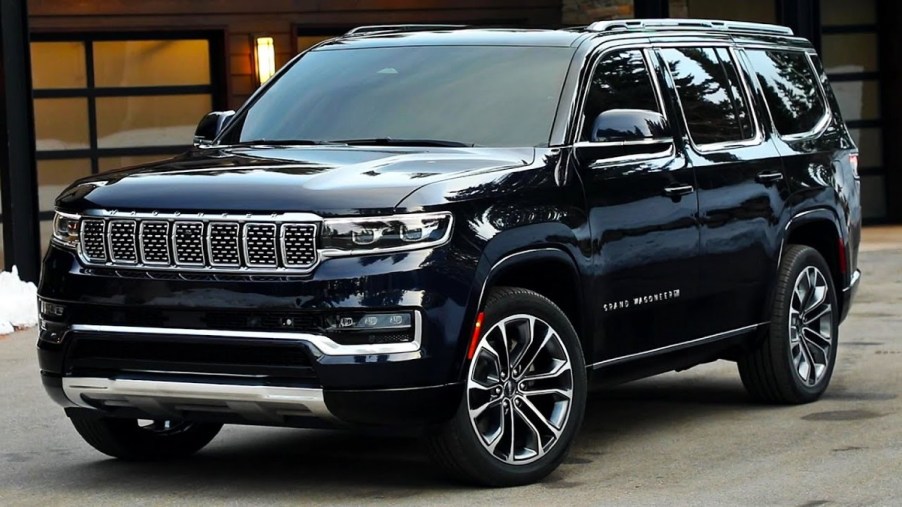
The 2023 Jeep Wagoneer Comes With Rear, All, or 4WD – What’s the Difference?
The 2023 Jeep Wagoneer is on its way and this newest version will have a long version known as the Jeep Wagoneer L. One of the coolest parts of the new Wagoneer is that it’s getting a whole new engine. It’s the Hurricane, a turbocharged 3.0-liter inline six. This is matched to an 8-speed automatic transmission and you can get rear, all, or four-wheel-drive. So what’s the difference between rear-wheel-drive, all-wheel-drive, and four-wheel-drive? Let’s take a look.

What is RWD?
Rear-wheel-drive is one of the options you can get in your new 2023 Jeep Wagoneer or Jeep Grand Wagoneer. Rear-wheel-drive is when the powertrain “places rotational propulsion on the rear wheels only,” according to Car and Driver. It notes that while rear-wheel-drive used to be the primary setup, most vehicles now have front-wheel-drive, all-wheel-drive, or four-wheel-drive.
Even though it isn’t the most popular anymore, Car and Driver says that rear-wheel-drive isn’t without its benefits. It distributes weight evenly, allowing for a better balance. It also lets the tires wear evenly, which Car and Driver notes can cause blowouts. In addition, a vehicle with rear-wheel-drive “has a center of gravity that lines up with the driver’s seat, which provides the sensation of enhanced control that can improve operational prowess.”
What is AWD?
In the four-wheel-drive, rear-wheel-drive, and all-wheel-drive trio of powertrain debate, all-wheel-drive is perhaps the most versatile. All-wheel-drive also sends force to both the front and rear axles. Unlike four-wheel-drive, where this torque is applied evenly, all-wheel-drive “allows for a variation in the power that’s sent to each axle which allows the wheels to rotate at different speeds, providing better handling on dry pavement, too.”
There are two main types of all-wheel-drive: part-time and full-time. As the name implies, full-time all-wheel-drive is always on. Part-time all-wheel-drive uses sensors to know when it should turn on.
4WD is more rugged than AWD or RWD
Four-wheel-drive, or 4WD, is generally found in pickup trucks and serious SUVs like the Ford Expedition or Chevy Suburban, and now the Jeep Wagoneer. Four-wheel-drive is a more rugged option than all-wheel-drive or rear-wheel-drive. According to Driveway, “4WD sends power to both front and rear axles, but 4WD locks the front and rear driveshafts together.” That means that the front and rear axles are both receiving the same amount of power, and the SUV or truck can handle tough terrain.
Four-wheel-drive is typically turned on by a button, as opposed to all-wheel-drive which is always on. Because four-wheel-drive is so good on off-road conditions, it’s generally too much for regular driving, and you won’t want to have it on when you’re taking your kids to school or commuting to work. Driveway points out that some SUVs and trucks have a high or low setting and the “high setting may help with slippery on-road conditions while the low setting gives max traction when off-roading.”
If you’re thinking about buying the new 2023 Jeep Wagoneer (or Jeep Grand Wagoneer), you’ll have a lot of decisions to make. One of the most important ones is certainly the powertrain you’ll get. Deciding between four-wheel-drive, rear-wheel-drive, and all-wheel-drive gives you lots of options, yet it can be overwhelming. Knowing the differences between these three options can help you decide which one is the right option for you.


